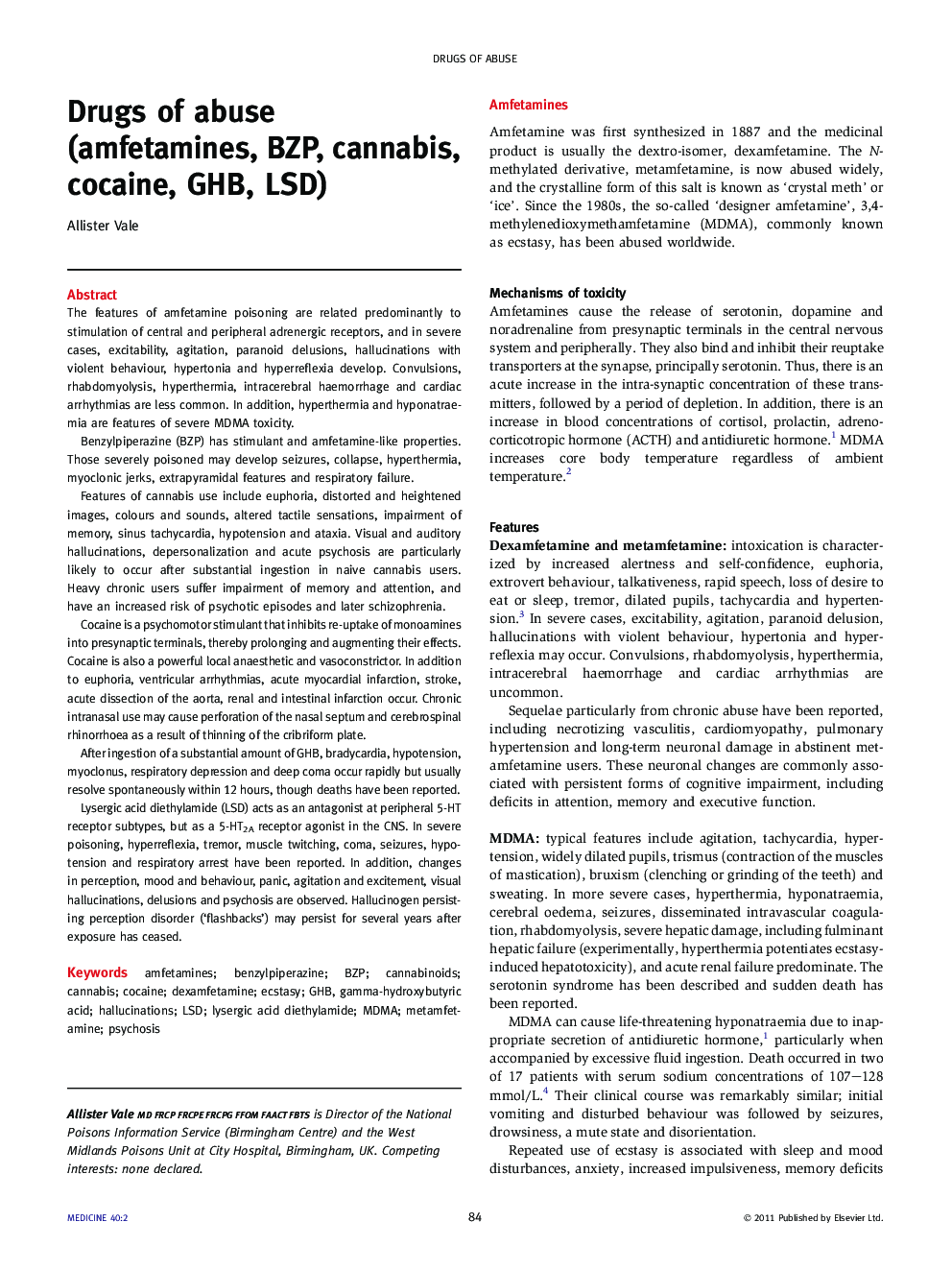| کد مقاله | کد نشریه | سال انتشار | مقاله انگلیسی | نسخه تمام متن |
|---|---|---|---|---|
| 3804119 | 1245016 | 2012 | 4 صفحه PDF | دانلود رایگان |

The features of amfetamine poisoning are related predominantly to stimulation of central and peripheral adrenergic receptors, and in severe cases, excitability, agitation, paranoid delusions, hallucinations with violent behaviour, hypertonia and hyperreflexia develop. Convulsions, rhabdomyolysis, hyperthermia, intracerebral haemorrhage and cardiac arrhythmias are less common. In addition, hyperthermia and hyponatraemia are features of severe MDMA toxicity.Benzylpiperazine (BZP) has stimulant and amfetamine-like properties. Those severely poisoned may develop seizures, collapse, hyperthermia, myoclonic jerks, extrapyramidal features and respiratory failure.Features of cannabis use include euphoria, distorted and heightened images, colours and sounds, altered tactile sensations, impairment of memory, sinus tachycardia, hypotension and ataxia. Visual and auditory hallucinations, depersonalization and acute psychosis are particularly likely to occur after substantial ingestion in naive cannabis users. Heavy chronic users suffer impairment of memory and attention, and have an increased risk of psychotic episodes and later schizophrenia.Cocaine is a psychomotor stimulant that inhibits re-uptake of monoamines into presynaptic terminals, thereby prolonging and augmenting their effects. Cocaine is also a powerful local anaesthetic and vasoconstrictor. In addition to euphoria, ventricular arrhythmias, acute myocardial infarction, stroke, acute dissection of the aorta, renal and intestinal infarction occur. Chronic intranasal use may cause perforation of the nasal septum and cerebrospinal rhinorrhoea as a result of thinning of the cribriform plate.After ingestion of a substantial amount of GHB, bradycardia, hypotension, myoclonus, respiratory depression and deep coma occur rapidly but usually resolve spontaneously within 12 hours, though deaths have been reported.Lysergic acid diethylamide (LSD) acts as an antagonist at peripheral 5-HT receptor subtypes, but as a 5-HT2A receptor agonist in the CNS. In severe poisoning, hyperreflexia, tremor, muscle twitching, coma, seizures, hypotension and respiratory arrest have been reported. In addition, changes in perception, mood and behaviour, panic, agitation and excitement, visual hallucinations, delusions and psychosis are observed. Hallucinogen persisting perception disorder (‘flashbacks’) may persist for several years after exposure has ceased.
Journal: Medicine - Volume 40, Issue 2, February 2012, Pages 84–87